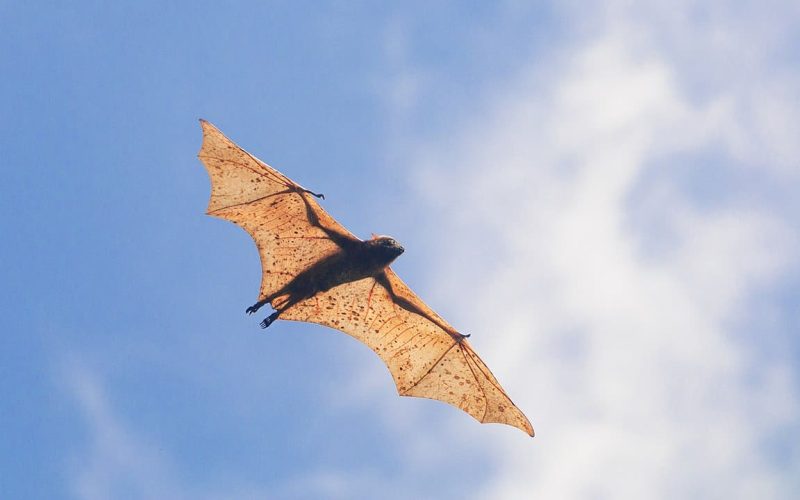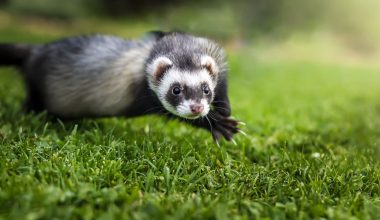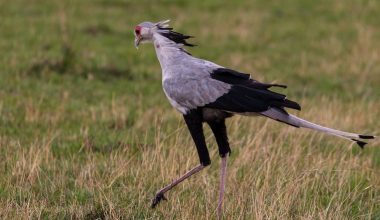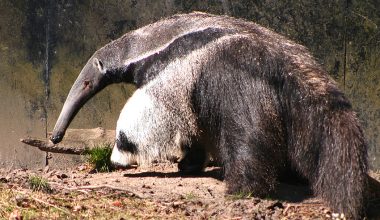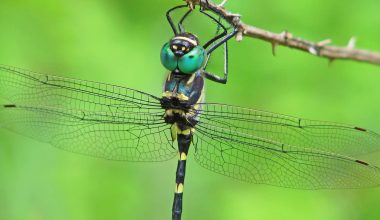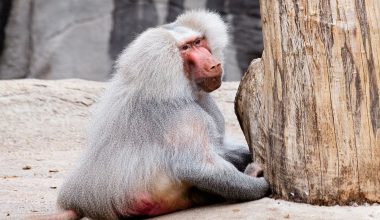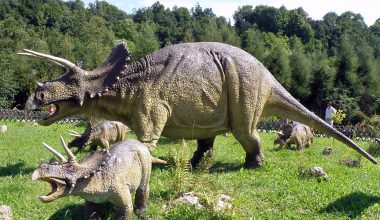There are various animals across the world which is capable of aerial locomotion either by powered flight or by gliding. Gliding is common in rainforest animals where trees are tall and are a bit fat from each other, so it is an efficient way of traveling between the trees, however, certain animals have developed flying by gliding to evade predators and even conserve energy during the flight. Here is the list of 10 animals that glide,
Animals That Glide
1. Butterflyfish
The Butterflyfish is a family of tropical marine animals that is most active during the day and sleeps at night. The unique feature is that it can change its colors automatically depending on the situation. They can be identified with the help of a black spot on its back, most likely to distract predators. It preys and feeds on small invertebrates and plant matter. Almost all fishes are seen in schools or pairs for feeding and protection, but some are highly territorial. The specific name of butterflyfish is Chaetodontidae which is a combination of two Ancient Greek words: chaste, meaning hair, and odontoid, meaning tooth.
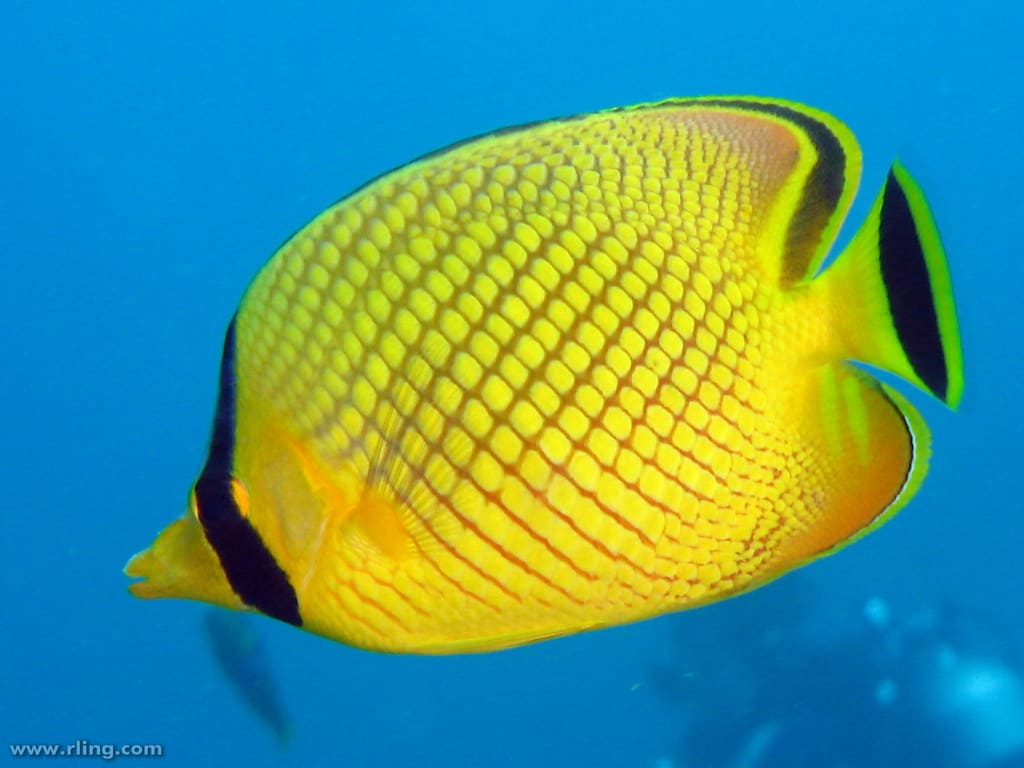
Image Source: Richard ling
2. Draco lizard
The Draco lizard’s scientific name is Draco volans and can grow upto 8.4 inches (including the tail). They are one of the animals that glide among the trees in the jungles of Southeast Asia to protect themselves from danger, attract mates, and find meals. The primary diet includes ants and termites. They are abundant in population in thier respective areas and no special conservation status is required. The behaviour of male species is highly territorial and primarily use thier gliding feature to chaise rivals on different trees.
Also Read: 10 Animals With 3 Letters

Image Source: Wikimedia
3. Feather-Tailed Possums
Feather-Tailed Possum’s scientific name is Distoechurus pennatus which belongs to the family Acrobatidae. They are found in West Papua, Indonesia, and Papua New Guinea and are openly confused with the feathertail glider. This is the only species of the family Acrobatidae that can grow between 100 to 120 mm and the average weight is between 50 to 53 grams. They primarily feed on nectar pollen and other forest food. Talking about the appearance, the body coloration is dull buff to light brown to grayish along with head is striped black and white, with conspicuous black patches behind each small, naked ear.
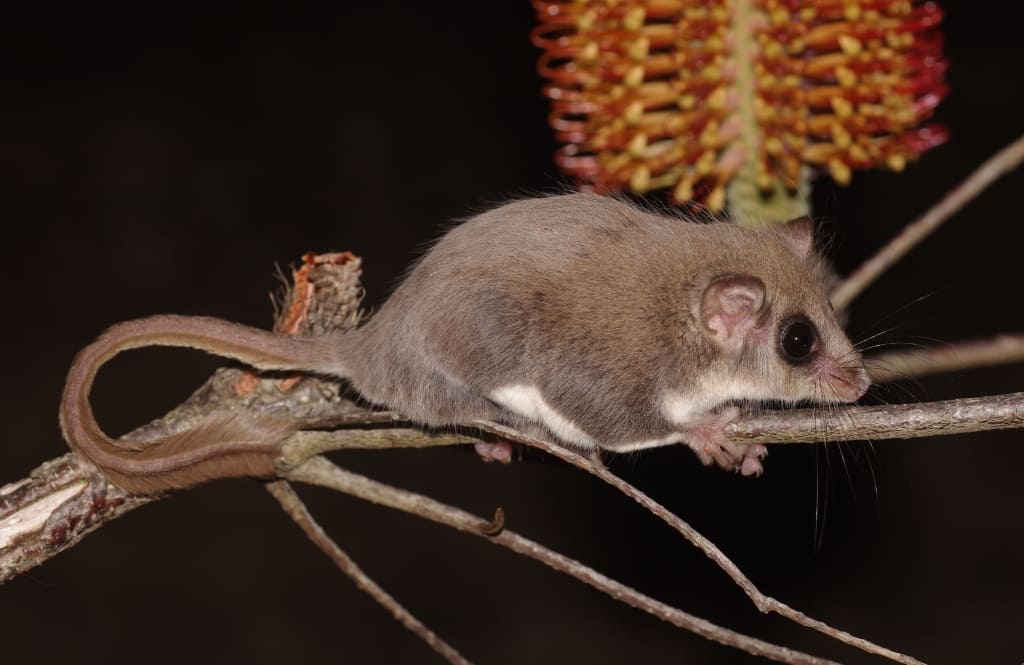
Image Source: eyeweed
4. Flying Fish
The flying fish also known as flying cod is mostly seen in warm and tropical waters across the world. Talking about the apperance, they have a long torpedo-shaped body along with blueish silvery scales and wing-shaped pectoral fins near the head. It is believed that the modern flying fish evolved some 66 million years ago and few fishes are extinct now. The primary diet includes plankton, crustaceans, and fish. The avarage lifespan of dying fish is upto 5 years in the wild.
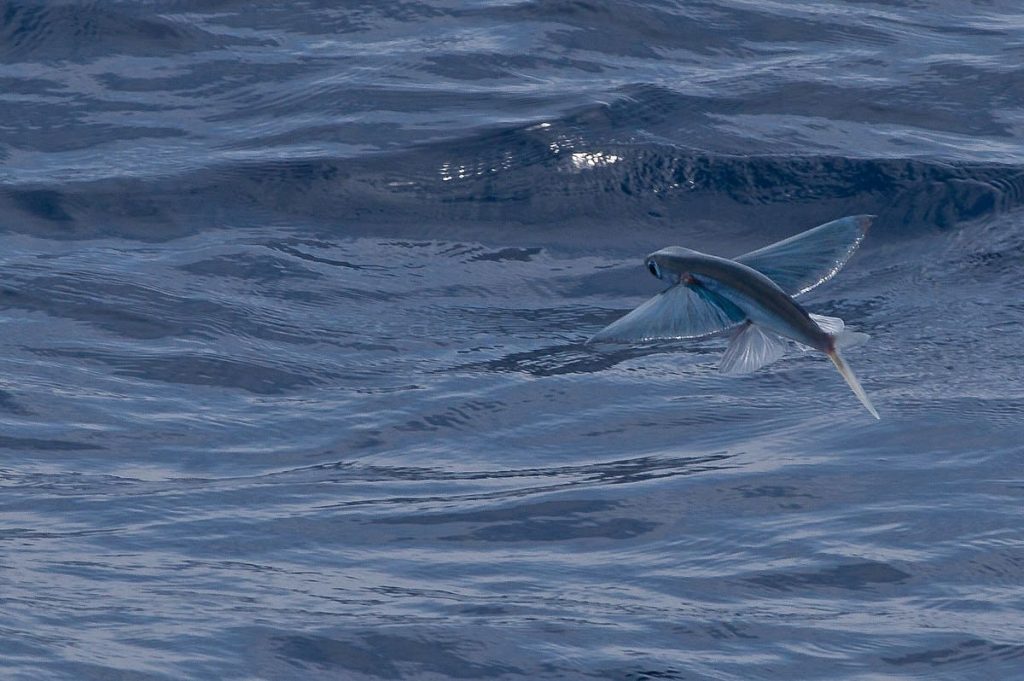
Image Source: Wikimedia
5. Flying Gecko
Flying Gecko is one of the animals that glide found in the Malayan Peninsula and is not territorial to the tropical rain forest. The behavior of animal species is territorial and usually separate from other males. The animal species is nocturnal and primarily active at night. The scientific name of the flying gecko is Ptychozoon Kuhli which belongs to the group of geckos. The primary diet includes insects and arthropods that offer them a variety of proper nutrition.
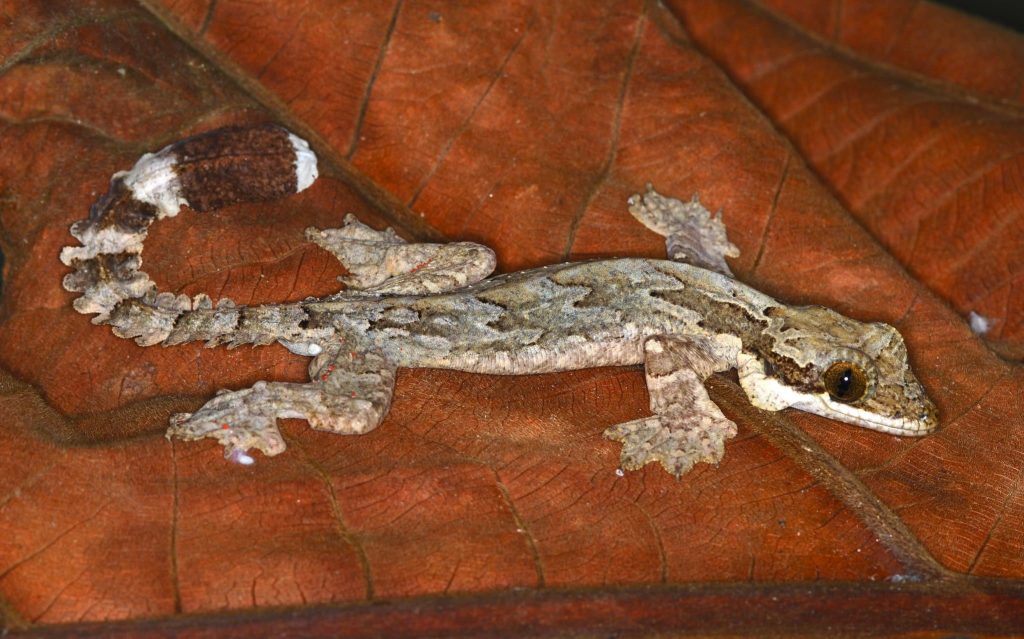
Image Source: Bernard
6. Giant Golden-Crowned Flying Fox
The Giant golden-crowned flying fox’s scientific name is Acerodon jubatus endemic to the the Philippines. The body length is between 178 to 290 mm in length and the average weight is between 1050 to 1200 grams. The avarage lifespan of a Giant golden-crowned flying fox is between 12 to 23 years in the wild. They are mostly seen in the Philippines, the Palawan region as well as the Batanes and Babuyan island groups. The dietary habit is herbivores and primarily feed on fruits of fig (Ficus) trees, though they also consume plant leaves (folivorous).
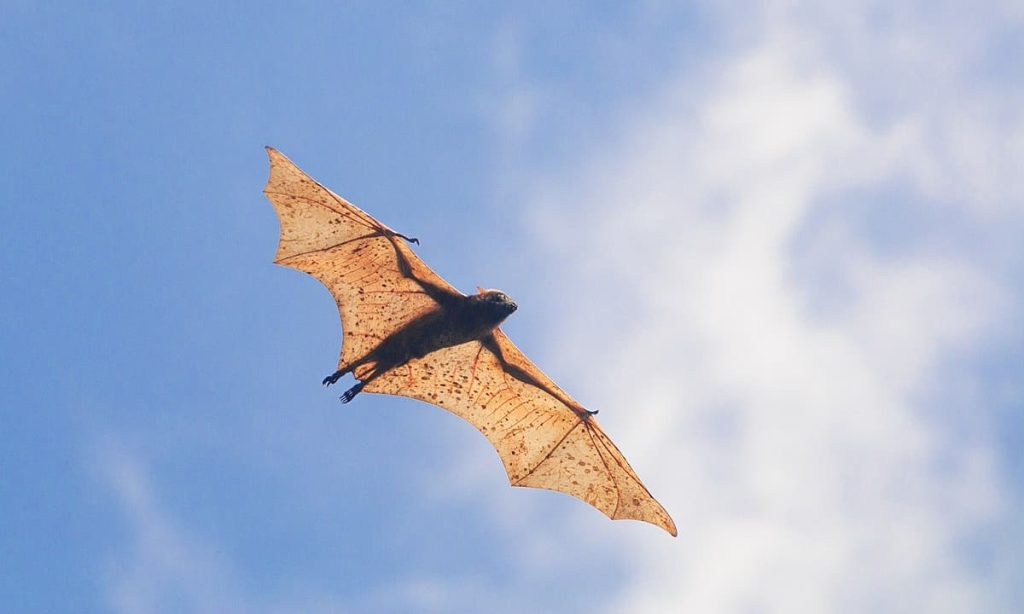
Image Source: Wikimedia
7. Greater Glider
The greater gliders are one of the gliding animals found in eastern Australia. The body length is between 39 to 43 cm in length and the average weight is between 600 to 1600 grams. The average lifespan of greater gliders is upto 15 years in the wild. These are small gliding marsupials where females are larger than the males. The body of the grater glider is covered with a soft shaggy coat of fur that increases its apparent size and the color of the fur ranges from white to brown and charcoal.
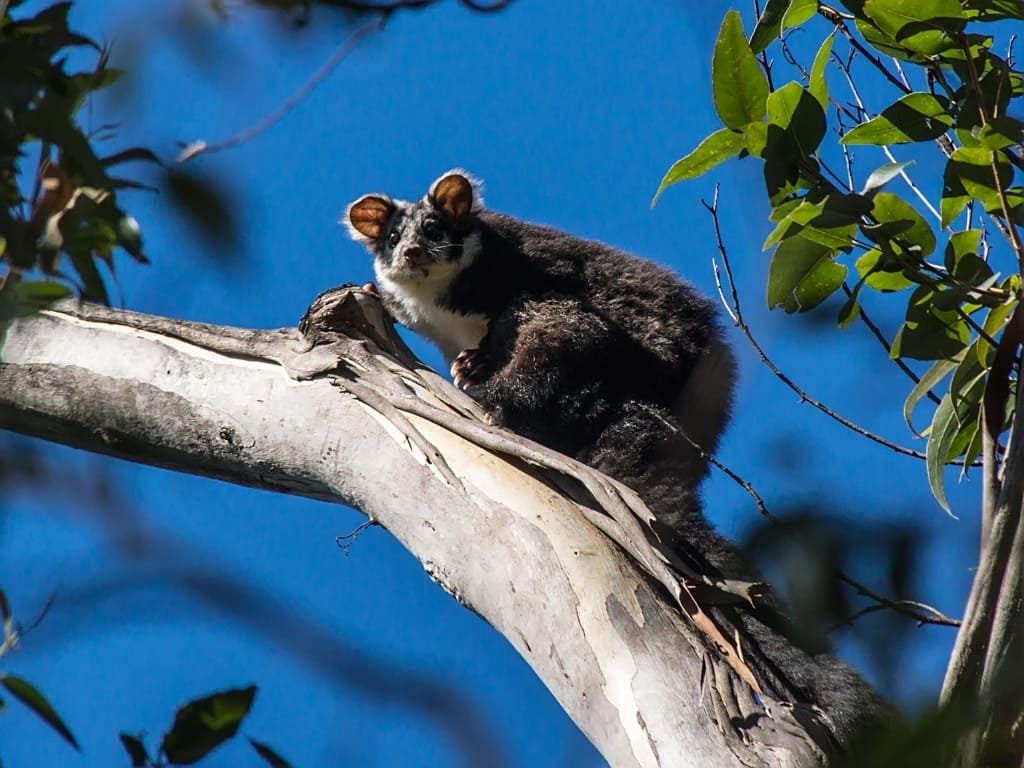
Image Source: David cook
8. Halfbeak
Halfbeaks are a genus of fishes found all over the world. They prefer to thrive in brackish water or freshwater environments and dwell on the surface of the water. The avarage lifespan of half break is unknown for any of the fishes. It is an oviparous animal which, means they lay eggs to reproduce and it will take place through spawning where a female halfbeak fish lays its eggs before they are fertilized by the male halfbeak. Eggs are laid in shallow waters during the summer months and these tiny eggs get attached to the fibers of eelgrass and stay there till it hatches.
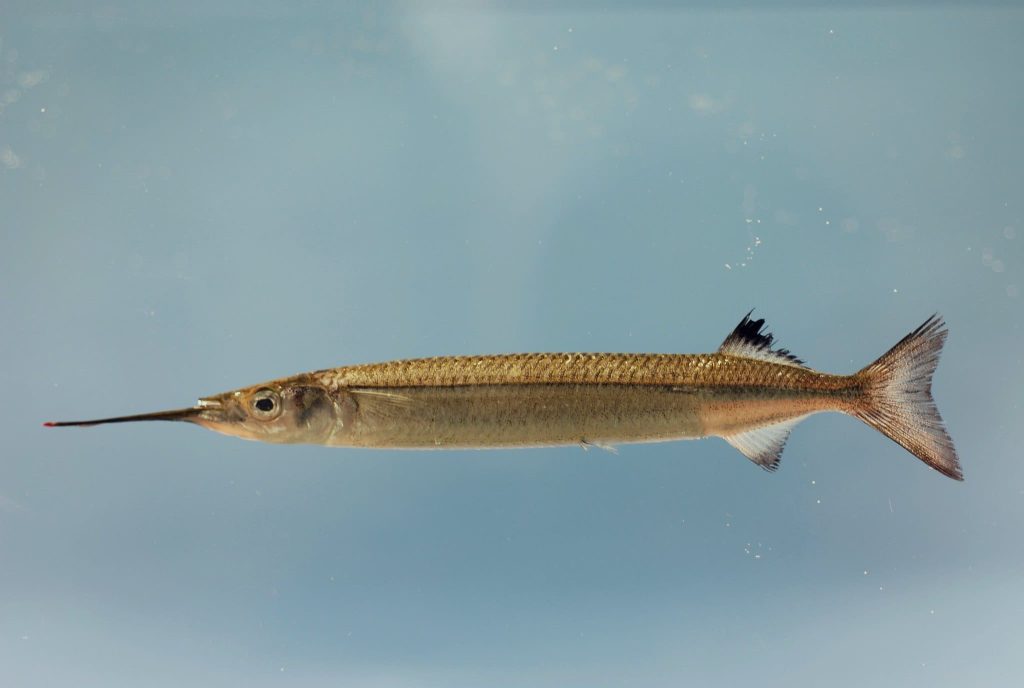
Image Source: NOAA photo library
9. Malabar Gliding Frog
The Malabar gliding frog also known as the Malabar flying frog is free frog species found in the Western Ghats of India. The body length of the Malabar gliding frog is upto 10 cm in length and is one of the largest moss frogs in the world. Males species are smaller than females. Talking about the appearance, the back of the skin is granulated and the color is vivid green without markings. It is found in the Western Ghats of India and has been described in the states of Tamil Nadu, Kerala, Karnataka, Goa, and Maharashtra.
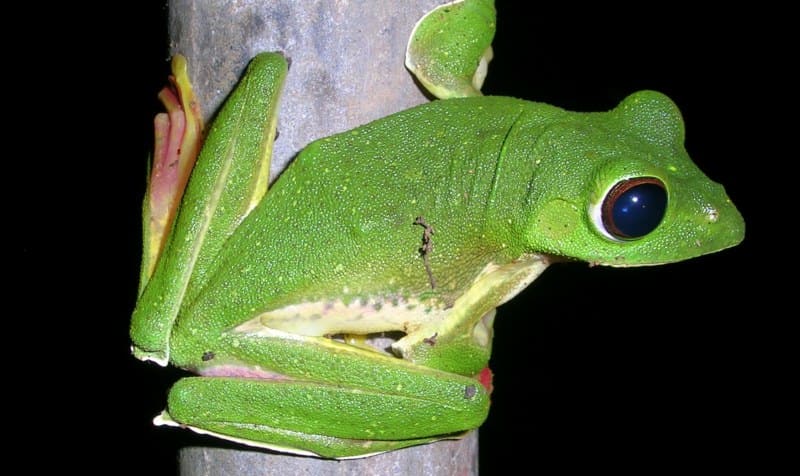
Image Source: Wikimedia
10. Northern Flying Squirrel
The Northern Flying Squirrel is one of the animals that glide and is the only flying squirrel found in North America. The body length is between 25 to 37 cm in length and the average weight is between 75 to 140 grams. The average lifespan of northern flying squirrels is between 4 to 13 years in the wild. Talking about the appearance, they have thick light brown or cinnamon fur on their upper body greyish fur on the flanks, and whitish fur underneath. The eyes are large along with flat tails and have long whiskers. The dietary habit is herbivores in nature and feeds on lichens, all mast-crop nuts, tree sap, insects, carrion, bird eggs, nestlings, buds, and flowers.
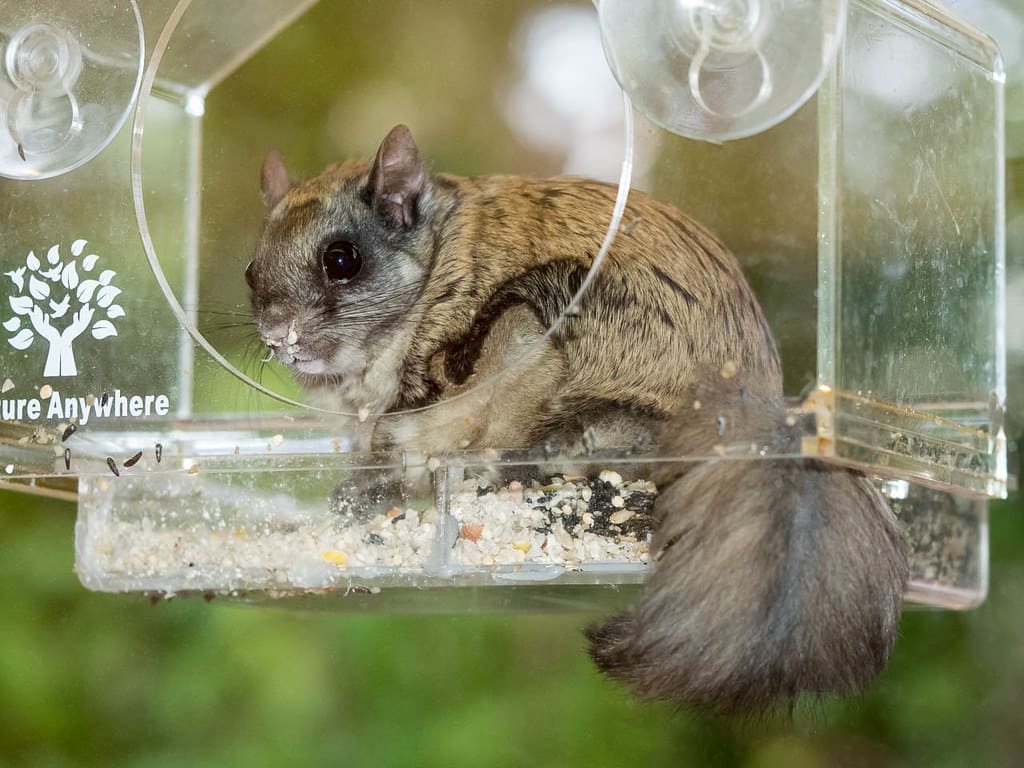
Image Source: Naoki Takebayashi
These are the 10 amazing animals that glide. Kindly share and post your comments.
